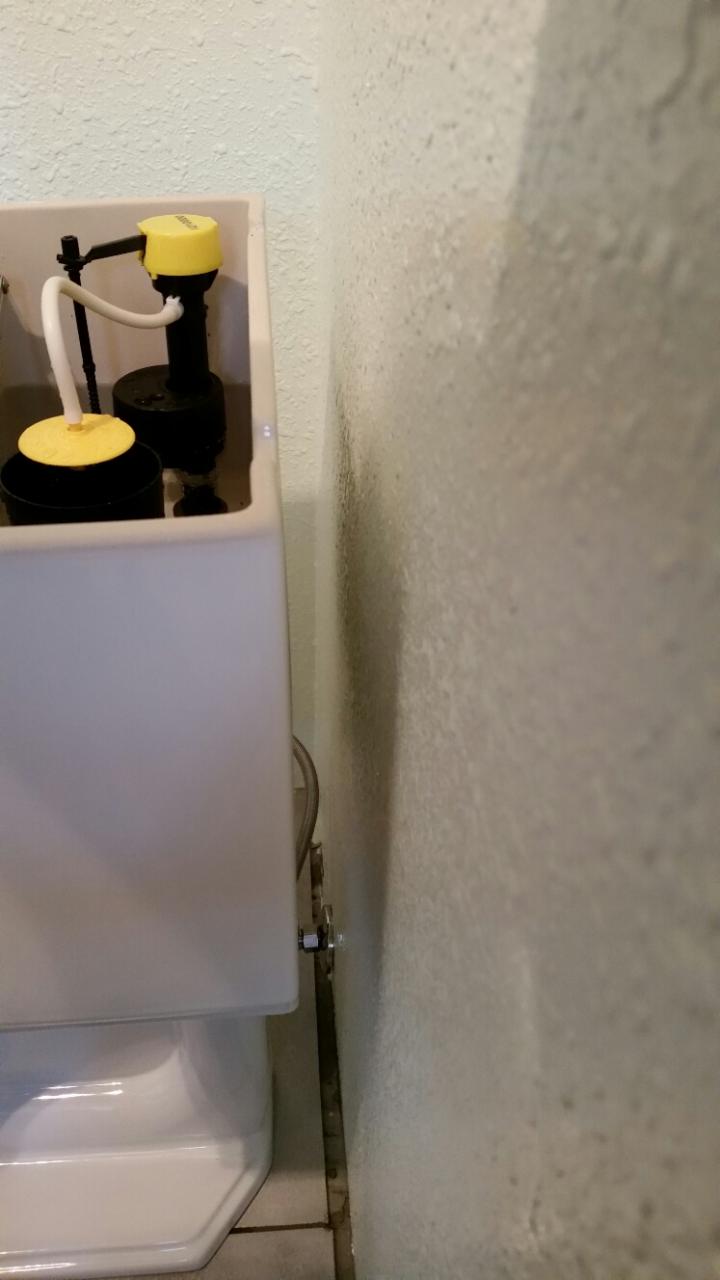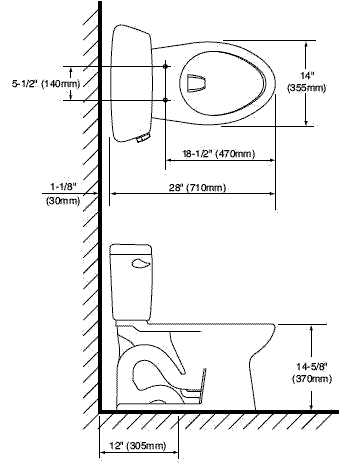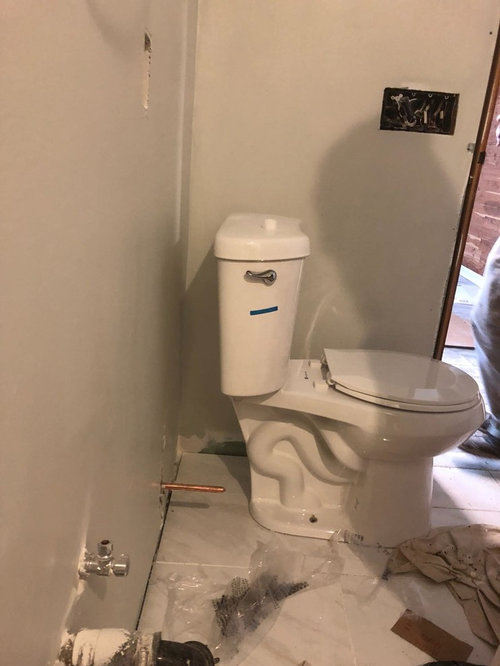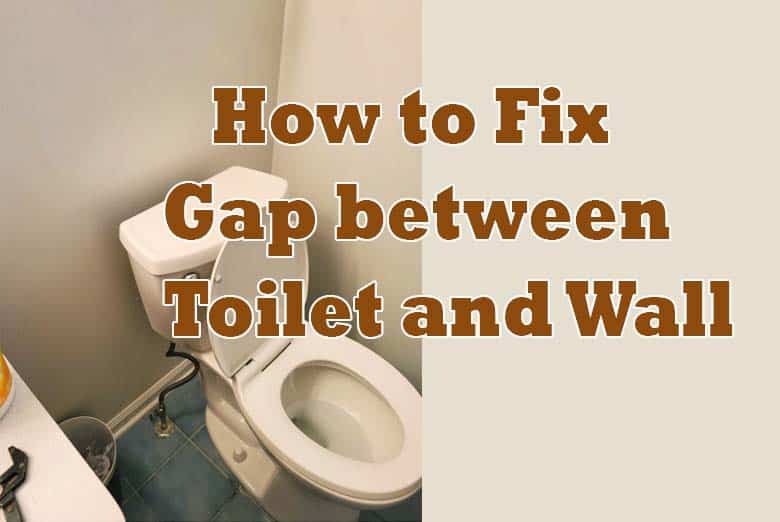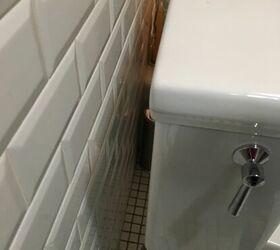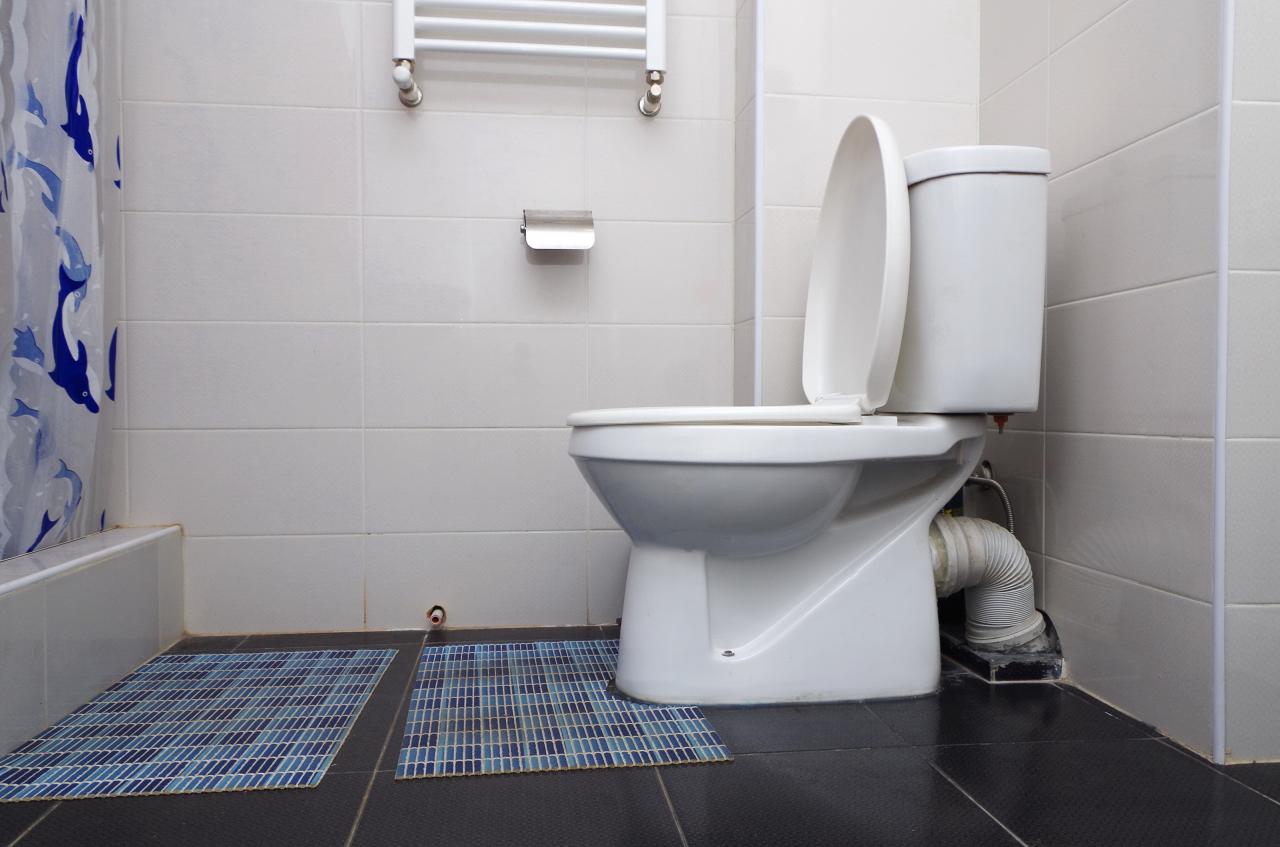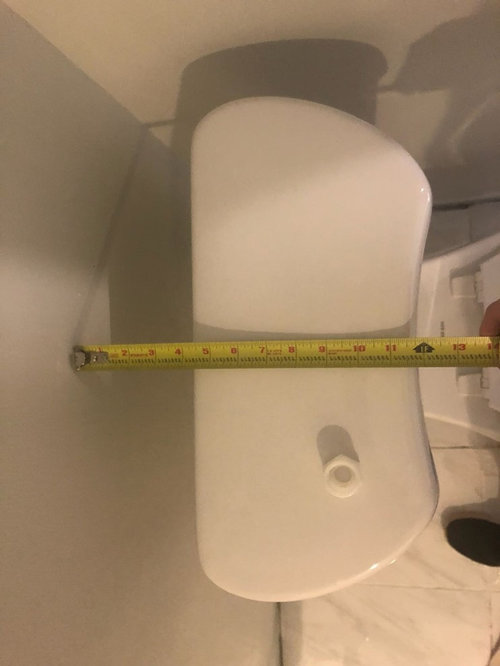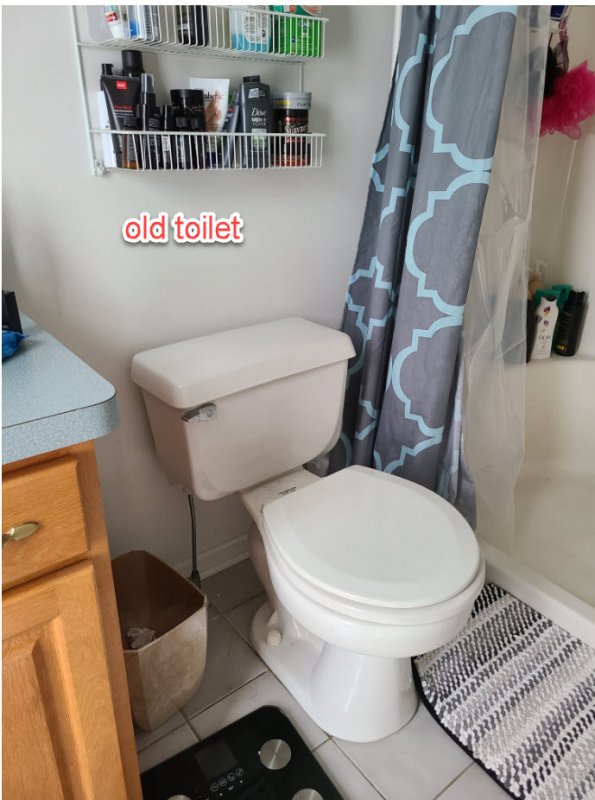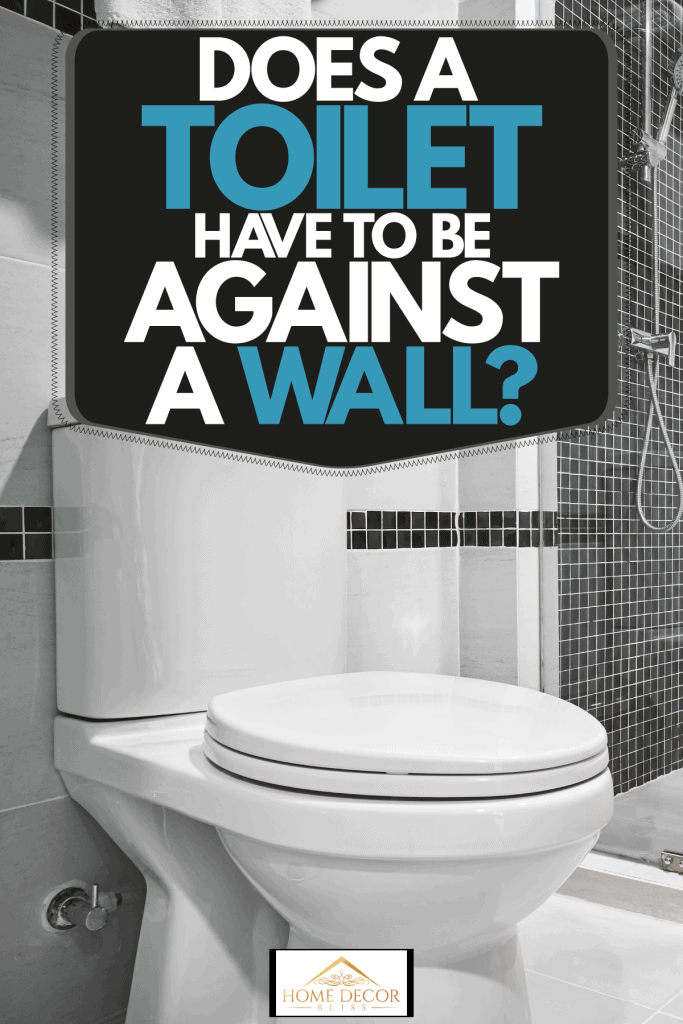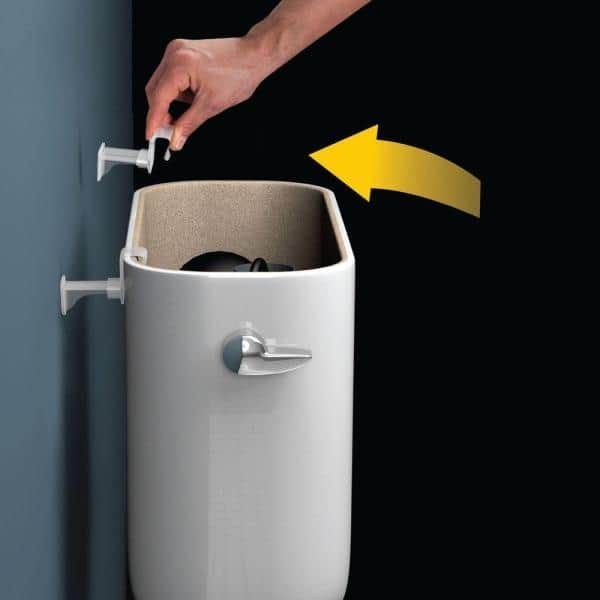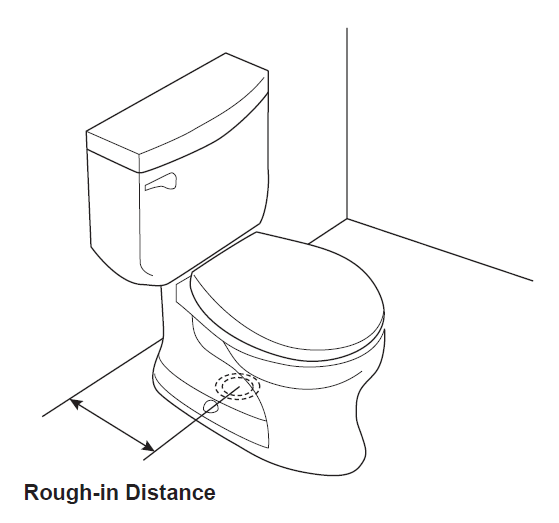How Much Space Between Toilet Tank and Wall
The Importance of Adequate Space
Having adequate space between the toilet tank and the wall is crucial for various reasons. Let’s talk about the importance of having enough clearance and why it should not be overlooked when installing a toilet.
- Preventing Damage: Insufficient space between the toilet tank and the wall can lead to damage. When there is not enough clearance, the tank may rub against the wall, causing scratches or even cracks. This damage can be unsightly and may require costly repairs or even a replacement of the toilet tank.
- Easy Maintenance: Sufficient space between the toilet tank and the wall allows for easier maintenance. With ample clearance, it becomes easier to clean around the toilet tank, preventing the accumulation of dirt, dust, and grime. This makes regular cleaning and maintenance more efficient and effective.
- Accessibility: Adequate clearance also ensures that the toilet tank remains easily accessible. In case of any repairs or maintenance needs, having enough space makes it easier for plumbers or homeowners to access the tank without obstacles. This accessibility can save time and effort when addressing any issues with the toilet tank.
- Enhanced Aesthetics: Proper clearance between the toilet tank and the wall contributes to the overall aesthetics of the bathroom. When there is enough space, the toilet appears well-positioned and balanced within the bathroom layout. This attention to detail can enhance the overall visual appeal of the space.
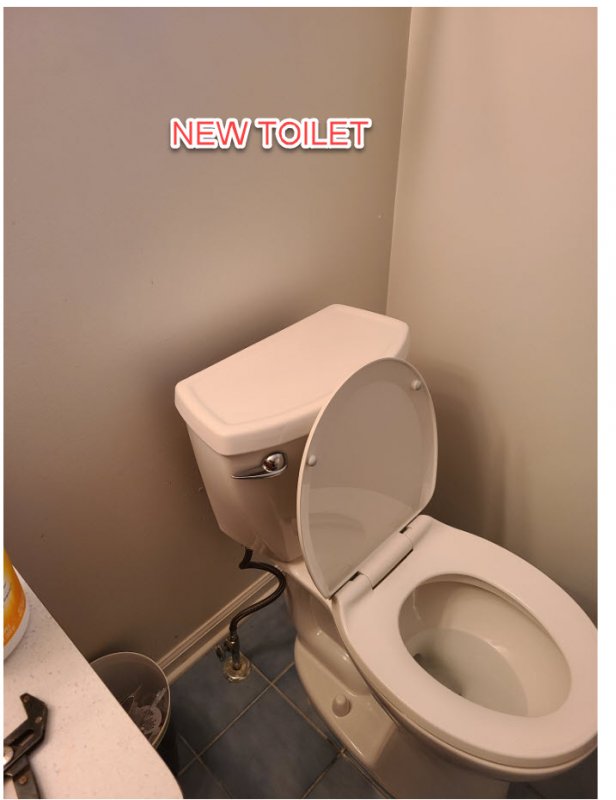
Finding the Right Distance Between the Toilet Tank and the Wall
Determining the optimal distance between the toilet tank and the wall is crucial for ensuring comfort and functionality. We will learn how to find the right measurements to achieve the ideal space between the toilet tank and the wall.
- Standard Guidelines: To determine the optimal distance between the toilet tank and the wall, it is helpful to refer to standard guidelines. The National Kitchen and Bath Association (NKBA) recommends a minimum clearance of 15 inches from the centerline of the toilet to any adjacent obstruction, such as a wall.
- Measuring Techniques: To measure the distance between the toilet tank and the wall, start by locating the centerline of the toilet bowl. Then, measure the distance from the centerline to the wall. This measurement will provide an accurate indication of the clearance space available.
- Considerations for Small Bathrooms: In small bathrooms, where space is limited, it may be necessary to adjust the optimal measurements. In such cases, it is crucial to ensure that there is still enough space for comfortable use and maintenance while maintaining the recommended minimum clearance.
- Customizations and Individual Preferences: While standard guidelines provide a good starting point, individual preferences, and bathroom layouts can influence the optimal distance between the toilet tank and the wall. Some individuals may prefer more space, while others may need to accommodate specific bathroom designs or fixtures. Flexibility is key when determining the ideal measurements.
The Variables That Affect Toilet Tank Placement
Toilet tank placement is influenced by various factors that need to be considered during installation. Below are the variables that affect toilet tank placement and provide insights into making informed decisions.
Bathroom Layout: The layout of the bathroom plays a significant role in determining the placement of the toilet tank. Factors such as the size and shape of the room, the location of other fixtures, and the presence of any architectural features or obstructions can impact where the toilet tank can be positioned.
Plumbing Considerations: Plumbing considerations are crucial when determining the placement of the toilet tank. The location of the existing plumbing lines, drain pipes, and water supply lines can influence where the toilet tank can be installed. It is essential to ensure that the toilet tank can be properly connected to the plumbing system without any complications.
Clearances and Codes: Building codes and regulations may dictate specific clearances required for toilet tank placement. These codes are in place to ensure safety and functionality. It is important to consult local building codes to ensure compliance and avoid any potential issues during installation.
Accessibility and User Needs: Consider the needs of the users when deciding on toilet tank placement. Accessible toilets may require additional space for maneuvering a wheelchair or other assistive devices. It is essential to consider the comfort and accessibility of all users to ensure a functional and inclusive bathroom design.
Common Problems Caused by Insufficient Toilet Tank Clearance
Insufficient clearance between the toilet tank and the wall can lead to various problems that can affect the functionality and aesthetics of the bathroom. We will highlight common issues caused by inadequate toilet tank clearance and the potential consequences.
Damage to the Wall: When there is not enough clearance, the toilet tank may rub against the wall during usage or maintenance. This friction can lead to scratches, dents, or even cracks in the wall surface. Repairing or repainting the damaged wall can be time-consuming and costly.
Difficulty in Cleaning: Insufficient clearance makes it challenging to clean around the toilet tank. Dust, dirt, and grime can accumulate in the tight space, making it difficult to reach and clean thoroughly. This can result in unsanitary conditions and an unpleasant odor.
Restricted Access for Repairs: When repairs or maintenance are required for the toilet tank, inadequate clearance can hinder accessibility. Plumbers or homeowners may struggle to access the tank, leading to more time-consuming and intrusive repairs. This can result in higher repair costs and inconvenience.
Aesthetically Unpleasing: A toilet with insufficient clearance can appear cramped and unbalanced within the bathroom layout. This can detract from the overall aesthetics of the space, making it less visually appealing. A well-positioned toilet tank with adequate clearance contributes to a harmonious and pleasing bathroom design.
How to Create the Ideal Space Between the Toilet Tank and Wall
Creating the ideal space between the toilet tank and the wall involves careful planning and execution during installation. Below we provide tips and solutions to help achieve the perfect clearance for optimal functionality and aesthetics.
Measure and Plan Ahead: Before installing the toilet, measure the available space and plan accordingly. Consider the standard guidelines for clearance, as well as any specific requirements or preferences. This will ensure that the toilet tank is positioned with the right amount of space.
Choose Compact or Wall-Mounted Toilets: If space is limited, consider using compact toilets or wall-mounted toilets. These options are designed to save space and can provide more flexibility in toilet tank placement. Compact toilets have smaller tanks, while wall-mounted toilets have their tanks hidden within the wall.
Consider Offset Toilet Flanges: In cases where adjustments are needed due to plumbing or obstructions, offset toilet flanges can be used. These flanges allow for slight adjustments in the position of the toilet, providing more flexibility in achieving the desired clearance.
Seek Professional Advice: If you are unsure about the ideal clearance or face challenges during installation, it is recommended to seek professional advice. Plumbers or bathroom designers can provide expert guidance based on your specific requirements and constraints.
How can i minimize a 3- inch space between the wall and toilet
Distance From the Toilet to the Wall Framing
Gap between toilet and wall
Toilet Dimensions for 8 Different Toilet Sizes (Toilet Diagrams
New toiletlarger gap between wall? What did I do wrong? Terry
Does A Toilet Have To Be Against A Wall? – Home Decor Bliss
Questions and Answers for Secure-A-Tank Toilet Tank Brace
Consumers MaP Toilet Testing
Related Posts:
- Bathroom Corner Shelf Tier
- Bathroom Towel Shelf Wall Mounted
- Bathroom Towel Shelf Chrome
- Bathroom Corner Shelf with Door
- Bathroom Floating Shelf for Basin
- How to Make a Floating Sink Shelf
- Marble Floating Shelf Bathroom
- Bathroom Shelf with Lights
- Bathroom Shelf with Brass
- Bathroom Farmhouse Ladder Shelf
